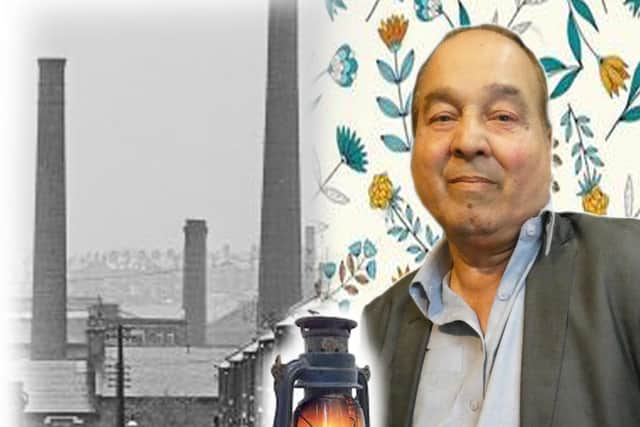Heckmondwike Stories In A Suitcase: How Mahmood adjusted to the cold on arrival in the Heavy Woollen District
and live on Freeview channel 276
Mahmood was part of a large group of Indian and Pakistani nationals who were encouraged to come and work in our local mills throughout the post-war decades of the 1960s and 1970s.
These men came to Britain because of a severe labour shortage existing during that period across the whole country.
Advertisement
Hide AdAdvertisement
Hide Ad

As someone who now makes up a dwindling generation, Mr. Hussain has agreed to be interviewed for the Kirklees Faith Network's ‘Heckmondwike Stories In A Suitcase’ project.
Speaking to the Reporter Series, Mr. Hussain said: “I had been warned back in Pakistan about the snow and the cold British weather. Yet, despite a chill in the wintery air, I did not see any snowfalls on the actual day of my arrival. I obviously saw white sleet after arriving in Heckmondwike. But the first snowflakes did not fall until several days later.
"I quickly got used to the weather as the weeks turned into months. It was always raining or snowing. I can even remember seeing snow in the middle of April and May as the years passed.
"There was hardly any daylight in that post-war era. Instead of the bright sunshine which I had been accustomed to whilst living in Pakistan, I now saw grey clouds, mist and fog everywhere.
Advertisement
Hide AdAdvertisement
Hide Ad"Besides the misty weather and fog, it rained on most days. The rainfall reminded me of the Sub-Continent's Monsoons. I often saw huge puddles in cul-de-sacs like ours. Yet I was surprised there were never any floods. But then I suppose most of the rainwater went into the gutters. The entire guttering and drainage system made me feel curious. As a boy, I often used to wonder where the water went.
"As Pakistani migrants, we felt the impact of those cold winters not just whilst being outdoors but also when we were indoors. Our small terraced houses did not have insulation or gas-central heating. So, the rooms inside were very cold unless there was some coal lit up in the fireplace.
"My own home did not have any hot water at that time - which made the atmosphere even more unbearable. Only cold water came out of the taps. My father had to boil the cold water in a kettle or a pan if it was to be used for washing and shaving.
"But it was naturally impossible to have a full shower with cold water in those days. We had to instead go to the public baths for a proper wash. The nearest facility as the name suggested was on Bath Road in Heckmondwike.
Advertisement
Hide AdAdvertisement
Hide Ad“A row of small cubicle rooms were available to use in this public building. Each cubicle had a bath fitted inside. There was usually a two pence charge to have a bathtub filled up with steaming hot water.
"We had a very close-knit community spirit amongst our Pakistani households during that Sixties decade. Our numbers were really small, and the women had not yet come to England. But the men would socialise together during their days off work on the weekends.
"I came to England at the age of 11. But I could not work in the mills until my 16th birthday. By law, I had to be in full time education. So, instead of going to work with my father, I had to spend the first three years of my new life at 'Heckmondwike Secondary School'. I was in its classrooms between the years 1966 until 1969.
"Heckmondwike Secondary School was known in those days by the majority of local people as the 'White-Lee School' because it had been built on the White-Lee fields next to the large Dale Lane estate. The structure was seen as one of the newest school buildings in the area.
Advertisement
Hide AdAdvertisement
Hide Ad"I found the building equally breath-taking from inside when I began going there as a pupil in September 1966. The corridors and classrooms had so much space! The whole building was always lit up for most of the time and natural light came through its huge glass windows if the electricity had to be switched off for any reason.
"Unlike Pakistan, I did not have to buy new writing books or textbooks. Everything was provided free by the school down to the brand new pens and pencils! The only items which needed paying for was the uniform and school-bag. We were even given free milk in the morning as soon as everyone came into their classes. The milk was in small bottles, and all the children drank it through straws.
"There were also wooden desks and chairs for us to sit on. What surprised me just as much was the different rooms used for different lessons.
"I could now understand some of the reasons why everyone in the Sub-Continent was calling England a 'rich country'. The politicians in England seemed to be investing a lot of money in schools like 'White-Lee'.
Advertisement
Hide AdAdvertisement
Hide Ad"Racism was not a big problem at first because there were very few Pakistani children who went to the White-Lee School. In fact, everyone - children and adults - seemed to get on with each other in those days.
“I suppose the racism became more widespread during the following 1970's and 80's decades after the National Front began to get active. Otherwise. My own time at school during the Sixties was a rather quiet one.
"I left school in the year 1969 to start work in the mills. The 'White-Lee' building was closed down for while shortly after I had finished studying there. The local authority had got concerned the building's foundation's were 'sinking' into the ground."